The large-displacement sports-touring segment is a crowded one these days, especially in the dual-purpose segment. While some manufacturers, like BMW Motorrad, fall on the more off-road side of things with the GS-series, others, such as Ducati, favour the sportier rider who wants a big dual-purpose sports-tourer that goes fast, and isn’t too concerned about the dirty stuff.
Since 2003, the Multistrada has been filling a sports-touring niche that feeds the appetite for a fast, capable, good-handling, dual-purpose motorcycle that does many things well. Designed to be many things to all riders, for all reasons, the Multistrada proved to be very competent at delivering whatever the rider asked of it.
To actually provide the rider with what it has promised, Ducati has thrown almost every possible piece of electronic tech at the latest Multistrada 1200, making this bike a technological tour-de-force. While riders might say that adding riding modes and controls to a bike removes some of the essence of what makes a motorcycle, well, a motorcycle, the Multistrada would be a handful to ride with none of this electronic wizardry.
This is simply because the 1,200 cc V-twin Testastretta engine, with its variable valve timing, lets the Multistrada put out some 160 hp, which, for a dual-purpose sports-tourer, is a humongous amount of power. As the Pirelli tagline goes, “power is nothing without control”, and control, oddly enough, is what Ducati delivers with the electronics suite on the Multistrada.
From the first-generation Pierre Terblanche-designed Multistrada 1000 DS with its 998 cc V-twin back in 2003, through the 1,100 cc version in 2007 to the first Multistrada 1200 in 2010, what is the second-generation Multistrada like to ride and live with? Find out more after the jump.
To begin with, in 2003, the Multistrada was designed to be Ducati’s take on what a multi-role bike is. Despite having, at the time, the ST3 with its hard bags as a sports-tourer, Ducati decided that a dual-purpose-styled litre-bike was needed, in the mould of the Aprilia Pegaso and Cagiva Canyon.
With BMW’s GS being the standard for an all-terrain bike designed to cross continents, Ducati went the other way with the Multistrada, biasing the handling towards road use, and high speed. This wasn’t a bad thing, as European riders took a shine to the first-gen Multistrada, despite its polarising looks.
Today’s 2016 Multistrada 1200 has taken the long road towards the refinement of Pierre Terblanche’s original design. Approaching the Multistrada – which means “many roads” in Italian – the first thing that strikes you is the ‘beak’, carried over from the 2010 model, the nose of the Multistrada that puts one in mind of a large, flightless bird of some sort.
So, what does the Multistrada offer as a big sports-tourer? Getting on the bike isn’t that much of a stretch for the ‘normal’ rider, the adjustable seat seeing to that. Being able to be set between 825 mm and 845 mm, the seat will accommodate most leg lengths. Anyone shorter than 165 cm in height, please select another bike.
Getting on the seat reveals that Ducati has been listening to rider feedback. The very first Multistradas had truly terrible seats, overly firm and leading to saddle-soreness after a couple of hundred kilometres. The new Multistrada 1200 has a genuinely excellent seat, and this can be vouched for during testing as during a 600 km one-day ride, our tester did not think about the saddle at all.
After the ride, and getting off, there was absolutely no stiffness or soreness to be felt in the rider’s bottom end. No comment on the pillion position, as there was no opportunity for testing, but suffice it to say, if the pillion seat was anything like the rider’s, there would be nothing to complain about.
Seated in the saddle reveals more of the Multistrada’s nature as a sports-tourer designed to eat up the miles. The hands fall into a natural position on the handlebars, leaving the wrists in a relaxed position, and allowing for unrestricted movement. The foot-pegs are just a touch rear-set, enough for an aggressive seated riding position when called for, but not enough to lead to cramps and stiff knees.
Overall, the Multistrada puts the rider in the position of being part of the bike, as opposed to being perched on it. Looking at the very comprehensive instrument panel reminds one that the manual of this bike needs to be perused very carefully, more of which later.
Bring the bike to life only requires a single push of the start button, the ECU taking over the starting cycle immediately. No push and hold of the starter button here. The 1,200 cc Testastretta DVT (Desmodromic Variable Timing) twin-spark engine fires into life after a couple of cycles of the starter turning over the 12.5:1 high-compression pistons.
Kicking the six-speed gearbox into first with a definite ‘click’ and taking off shows the very smooth and controllable clutch action. Pulling on the clutch, and release, is very progressive, and lever effort is noticeable, but very minimal. This means taking ultra-low speed hairpins and half-clutching in heavy traffic is without issues, and easily done.
Accelerating through the gears with the ride-by-wire throttle showed a seamless rush of torque, with the left foot having to move quickly to keep up with the engine revs. With 160 hp at 9,000 rpm and 132 Nm at 7,000 rpm on tap, all six gears are taken care off quickly, and top speed for the Multistrada is, let’s say, more than adequate.
The Multistrada’s Testastretta engine with Ducati’s hydraulic variable valve timing achieves a wide spread of the power-band by letting the valve overlap be adjusted by the engine’s ECU to either provide more power at the top-end, or torque at the lower-end, depending on rider needs and riding parameters.
Continuing the engineering technology inside the engine, the Testastretta power plant comes with twin spark plugs in each cylinder head, with each plug’s ignition timing controlled independently. Considering the over-square piston design of the engine, this means that the flame-front during the ignition cycle has time to burn completely, leading to more power and better efficiency.
Which brings us to the reason why the Multistrada is what it is. This bike is designed to travel the roads fast and smooth, with the horsepower and torque taking the bike, and rider, along in relative comfort, and highly entertaining speeds.
Eschewing our usual test loop of canyon strafing, we took the 2016 Multistrada 1200 for a weekend trip up to Cameron Highlands. This presented the Multistrada with a mix of highway cruising, tight mountain roads and country ‘B’ roads. On the highway the Multistrada performed admirably well, with several long hours in the saddle going past in a flash.
There was no real vibration coming through the handlebars or pegs, the Testastretta engine mounted well and dampened inside the trademark Ducati trellis frame. The wide-set bars allowed for easy handling and changes of direction, and pushing the Multistrada down and into a corner – no matter what the radius – was done with pin-point precision.
This showed another aspect of the Multistrada – its handling and road manners. A pair of fully-adjustable 48 mm diameter forks were perfect for our test rider with the factory settings. Although a touch over-damped on rebound at lower road speeds, highway cruising and fast cornering did absolutely nothing to upset the Multistrada’s composure.
At the back, the Sachs fully-adjustable rear shock with remote preload adjustment also delivered with the standard settings, although a touch of preload would be called for if the Multistrada was going to be pressed into passenger-carrying duties on a regular basis. Static sag was perfect as is, and enabled our test rider to get both feet down comfortably.
The Multistrada’s capability at handling all kinds of road surfaces was sublime, and it performed with a grace that is typical of almost all high-end Ducatis. Full disclosure – the author owns a Ducati 916, and this is the handling yardstick by which all other bikes are judged.
Taking the country back-roads back to the city via Sungai Koyan and Karak didn’t upset the Multistrada in the slightest, and the engine didn’t miss a beat despite being called on for (very) high-speed cruising, fast sweeping corners and dealing with heavy traffic on the highway. On the highway, cruise control was used for a section, and worked as advertised, but we preferred to leave the throttle under manual control.
Carving the tight corners of the Lata Iskandar road heading up to Cameron Highlands let the Multistrada shine. Leaving the engine in third gear, the Multistrada was put in ‘Sports’ mode, letting all 160 ponies run free, and trust placed in the traction control, ride mode and the standard equipment cornering ABS.
A special note about the cornering ABS, and the Multistrada’s Bosch 9ME ABS system as a whole. The system was never intrusive, and the ABS amber light only lit up twice – once when hitting the sand strewn entry into a 180-degree right-hander, and the second when a car cut into our tester’s path on an uphill left-hander on a blind corner, and immediate evasive action was required. In both cases, there was never a reason to panic, and the Multistrada slowed down gradually and in complete composure.
The settings on the Multistrada 1200 are many and varied, and as stated earlier, careful reading of the owner’s manual is called for, in order to get the bike performing at optimum, and the way the rider wants it. The Multistrada comes with four ride modes – Sports, Urban, Enduro and Rain. In Sports mode, the engine is allowed full song, and the rider has 160 hp available at the twist of the wrist.
In Urban mode, the engine is limited to 100 hp, and power delivery is muted, somewhat. Don’t get us wrong, performance from the Multistrada is still entertaining, and there is more than enough power for canyon carving and quick overtaking. Rain mode was not used, even when it was raining, simply because the engine felt tractable enough to be controlled, while Enduro mode, for really slippery surfaces with very poor traction, was left well enough alone.
Riding modes, combined with the four traction control modes, give the rider eight different modes to choose from. The riding modes can be set on the fly, with the bike moving, to immediately change the character to the Multistrada in response to different riding needs and road conditions.
Coming standard on the Multistrada 1200 is wheelie control, which, in conjunction with the Bosch ABS, the three-map cornering ABS, traction control and ride modes form Ducati’s Safety Pack, also applied across the rest of the Multistrada range. It should be noted that no matter how hard we tried, we could not get the rear wheel to step out – which used to be something of a Ducati trademark – or the front wheel to lift. Needless to say, the option of turning off or to minimise all the controls was never considered, perhaps left to a rider with more courage than we have.
Don’t get us wrong, the Multistrada 1200 is a bike that is very easy to control and handle, but, you have to know what you are doing. More importantly, it does its best to keep the rider safe and in control at all times. Yes, deliberate abuse and ham-fisted handling of the throttle will defeat the systems, but you would have to be an idiot to do so.
Braking from the Brembos, front and rear, is excellent, as it always is with its braking products, with braking feel very linear and controllable. The adjustable brake lever allows for different hand widths to be accommodated with no fuss. The radial-mounted front M4 Brembo brakes, grabbing 320 mm discs, found favour with our test rider.
Our test bike came equipped with a pair of hard saddlebags, an optional accessory from Ducati. It should be noted that the bags comes with a 10 kg weight limit, and this is not to be exceeded under any circumstances. During the ride, one of the saddlebags was empty for a stretch, and this had a marked effect on high-speed handling.
Balancing the load between the bags made the problem of high-speed slow-motion weave go away, so pack the saddlebags with care – advice that applies to any sports-touring bike with hard luggage. The bags themselves, while well made, were sometimes a little finicky to remove, and mount.
Take your time, and line the mounting points up slowly, to ensure a secure interface between bags and bike. The key is required for mounting and dismounting the bags, as well as opening the cases. It was noted there was no ‘open’ option for the bags – allowing the bags to be unlatched without a key – with the key required for locking and unlocking at all times.
At night, the monochrome LCD display is clear and legible, and all information is readily available at a glance. The 1200 S Multistrada gets a colour TFT LCD display, but we didn’t really feel the need. What was missed was cornering lights, which come standard on the 1200 S.
Although the standard halogen lighting on the Multistrada is perfectly adequate, the LED lights that are standard fitment on the 1200 S would have been nice to have. We understand that the 1200 Multistrada is the base version of the range, but a few thousand more for better lighting would have been something that we would gladly swallow for improved riding capability at night.
The handlebar switchgear is backlit, which is a very nice touch, and allows for easy manipulation of the ride modes while cruising down the road in darkness. It was noted that the LCD display threw a ghosted image on the inside of the four-position adjustable windshield, which was very distracting in the darkness. This could be addressed by either hooding the instrument panel, or pasting a matte-black sticker on the windshield where the reflection appears.
Ducati Malaysia currently offers two 2016 Multistrada models, the 1200 – as tested – and the 1200 S. The Multistrada 1200 retails for RM119,999 on-the-road including GST but excluding insurance. The 1200 S Multistrada, which comes with a more sophisticated Skyhook suspension system, colour TFT LCD instrument panel, LED lights with automatic corner lights, along with Bluetooth and smartphone connectivity, goes for RM139,999 on-the-road including GST but excluding insurance.
The 1200 Enduro and Pike’s Peak variants of the Multistrada range will be brought in to Malaysia at the end of July, according to Ducati Malaysia. No prices were disclosed for either model, which raise the performance of the Multistrada for both road and off-road duties a notch above the 1200 and 1200 S.
And thus, we come to our summary. What is the Multistrada 1200? The bike exists for a multitude of reasons, and for many riders. It will perform, very competently, delivering whatever the rider wants of it. This includes very fast long-distance highway cruising, balls-to-wall canyon strafing, two-up sports-touring and daily riding in urban traffic. This is not a poser’s bike, because the non-riding public will not understand why the Multistrada looks the way it does.
So, who needs this bike? The 2016 Ducati Multistrada 1200 will appeal to the experienced rider who wants one bike to do everything, or a bike to complement another, more single-focused bike in the rider’s stable. What it isn’t is a bike for beginners, who will not even begin to comprehend what the Multistrada is capable of in the hands of the experienced rider.
Looking to sell your car? Sell it with Carro.

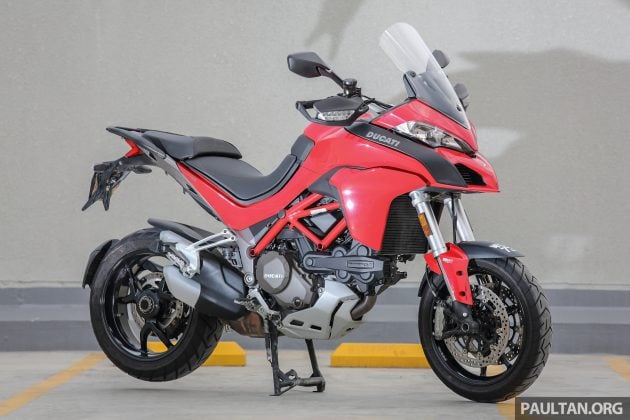


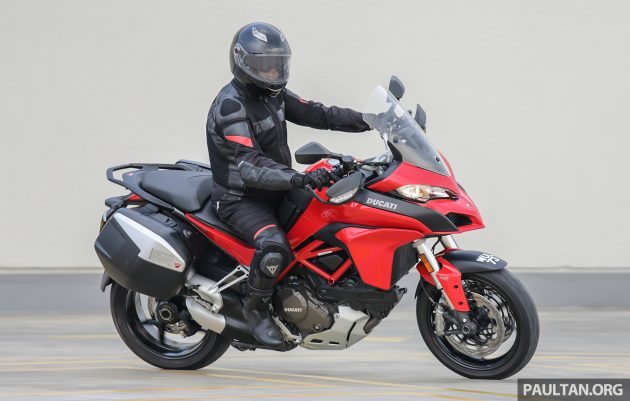



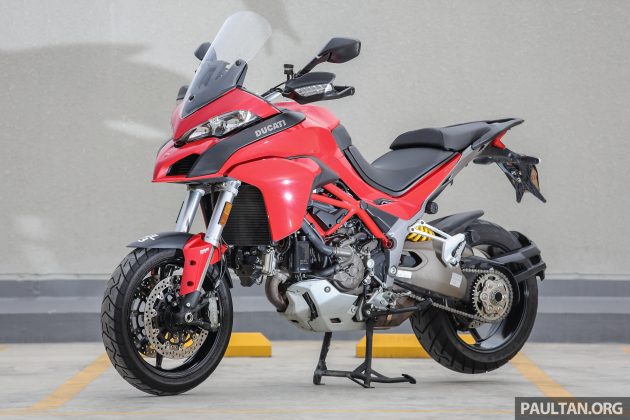
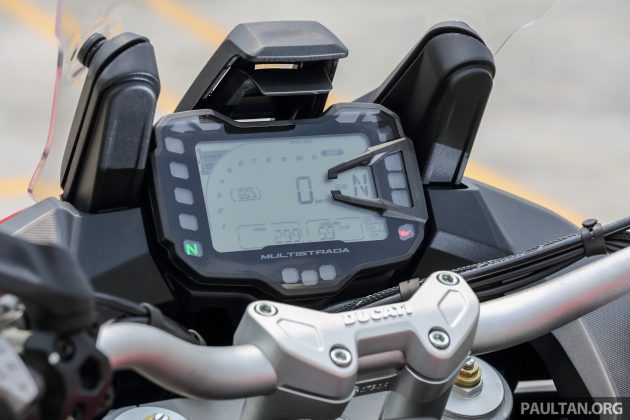



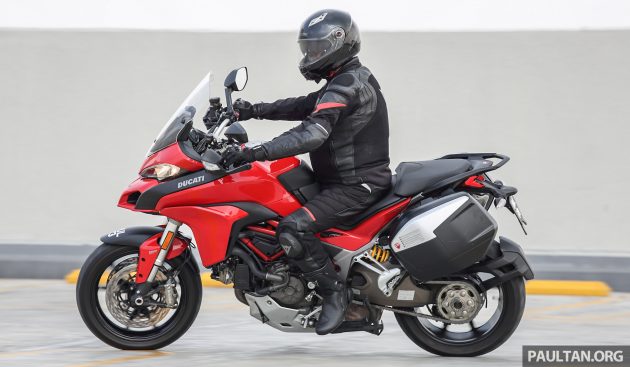



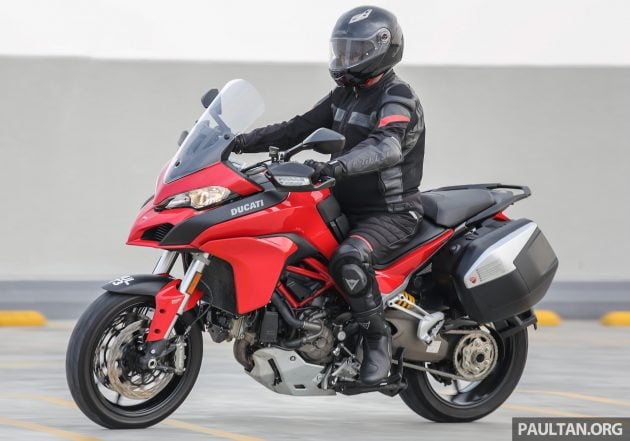








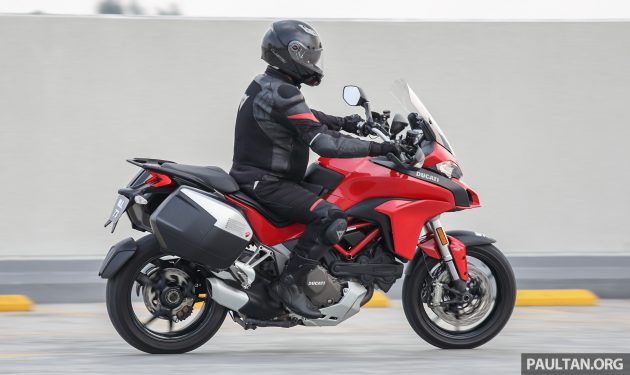
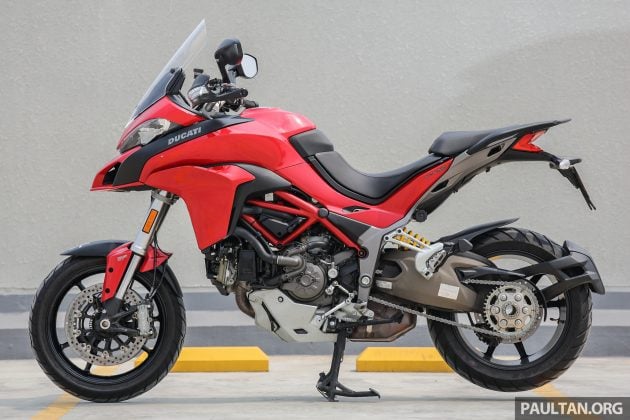
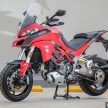
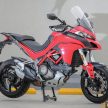
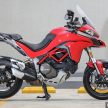
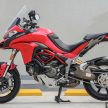
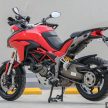
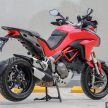
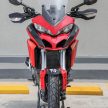
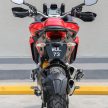
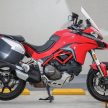
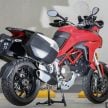

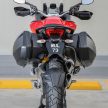
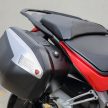
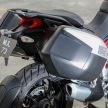

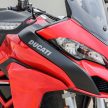
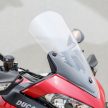
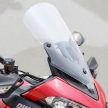
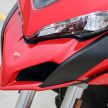
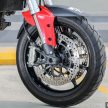
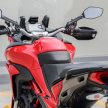
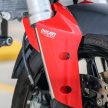
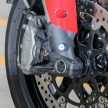
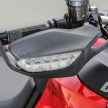
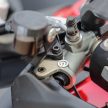
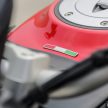
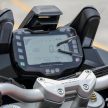
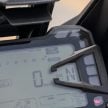
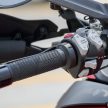
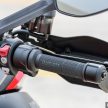
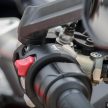
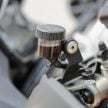
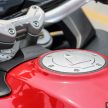
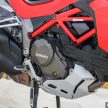
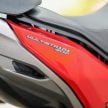
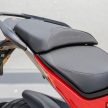
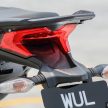
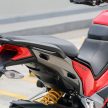
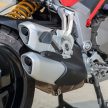
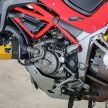
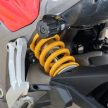
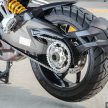
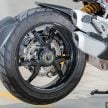
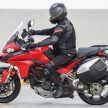
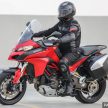
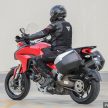
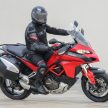
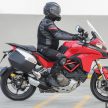
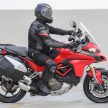
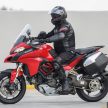

That was a pretty in depth & elaborate review. I tried last year’s MTS and it’s a little too big & tall for me. Got the Hyperstrada instead.
Lucky you
while me and many other only can dream.
pls do review on honda’s new crf1000l africa twin and vfr1200x crosstourer too
A sports touring bike which is supposed to do high mileage but using chain driven final drive is pointless?? I’ll pass….too troublesome having to lube the chain every 1,000km or soo.
Pls learn from BMW, sports touring/tourer shud be shaft driven or even belt driven instead for ease of maintenance, a sportsbike is ok using chain drive since the rider is very concern wt weights & power loss if using a shaft driven (not for high meleage). For sports touring/tourer, its more on ease of doing high mileage.
Kudos to mr mohan for a very nice review. can feel his passion for two wheeler.
btw it would be nice to give a hint on top speed. wink2.
Thanks for the lengthy write-up. I would find it really useful to know how far this bike travels before the need to re-fuel.
I’m confused. There was mention of Rain mode on the Multistrada??
very well written, mohan. Thank you.
Getting one for myself next week although its already 2 years old